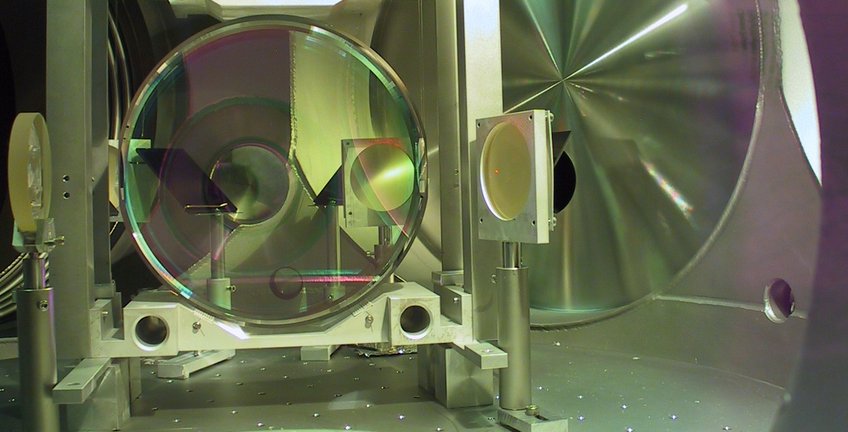
2002
Improvement of the GEO sensitivity and S1
January 2002
January 14, 21:00 UTC: end of the coincidence test run! We can look back on days when the power-recycled interferometer was in lock for more than 93 % of the time. Since Jan, 3rd (i.e. for more than 260 hours) the interferometer was in lock for more than 75 % of time. The longest continuous lock was 3 h 48 min.
Spring 2002
Since the January coincidence run the detector commissioning continued. Several subsystems have been changed and improved:
- The length of the second modecleaner was changed in order to make its free spectral range coincide with the correct modulation frequency needed for interferometer locking.
- The beamsplitter suspension has been changed in order to get rid of an undamped resonance which was caused by one of the suspension wires touching the edge of a clearance hole.
- A high power photodetector has been installed.
- The local damping of a beam director had to be repaired.
- The scattered light at the output bench was identified as the limiting noise source and has been reduced.
- The fast automatic alignment system and the slow alignment drift control system of the power-recycled Michelson interferometer have been installed.
- The data acquisition system has been improved (installation of whitening filters, replacement of timing card, adjustment of signal levels).
Due to all these changes the sensitivity of GEO has been improved by more than one order of magnitude compared to the January sensitivity. The automatic alignment system extended the duty cycle by a conciderable factor. At the end of this commissioning period, the interferometer has been running over the weekend with a duty cycle of 99.7 %. It has been continuously in lock for 32 h 12m (August 5th).
August/September, 2002
The next coincidence test run together with LIGO took place from August 23 to September 9. This run was called the first Science Run (S1) of the LIGO Scientific Collaboration. It was a huge success! Due to a lack of manpower we could man only day shifts; no operator was at the site from 10 pm to 6 am. In case the detector was not working during these times, an operator on duty was called by an automatic alarm system.
During this run 411 hours of data have been taken. The longest continuous period the detector was working at its designed operation point (all systems in lock) was over 121 hours. The overall duty cycle of the detector was above 97%.
Immediately after this coincidence run an engineering run started. We plan to inject signals with calculated inspiral waveforms into the detector in order to test and characterize the efficiency of the data analysis pipeline for inspirals. Additional experiments will be performed to obtain more detailed information about some of the subsystems.